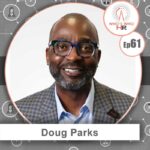Danielle Crane has been committed to modernizing the human resources field since her entrance over 15 years ago.
Captivated by the art of recruitment early on in her career, Danielle was immediately drawn to how it made her feel – creative, results-focused and value-added.
Since then, Danielle has strived to recreate that feeling in all disciplines of human resources, from talent acquisition to compensation and benefits to employee development and retention. Practicing HR in a variety of industries, from tech to financial services to not-profit, Danielle has partnered with leadership to build simplified, high-performing HR functions that fuel organizational growth and success. Danielle currently serves as the Sr. Director of Global HR for OneStream Software.
Danielle earned a B.A. in Human Resources and English from Albion College and a M.B.A. from Walsh College. She holds the PHR, SHRM-CP and CPLP certifications, and is a certified practitioner of Human Centered Design through the LUMA Institute. Danielle was a proud recipient of the 2015 “Michigan’s Top HR Professional” MISHRM award and the American Society for Employers (ASE)’s HR Executive of the Year award in 2016. You may connect with Danielle via her LinkedIn profile at www.linkedin.com/in/danicrane1.
More from Danielle…
Danielle has a background in both the for-profit and non-profit worlds. But what really sets her apart is her use of “design thinking.”
She says it’s not a new way of doing things, but it’s rare to see it in HR. She told us:
“I think design thinking at its best throws out the well-vetted PowerPoints and favors giant sticky pads and Post-it notes. And so I think many of us were raised on PowerPoint and coached to believe that we need to be an expert at all times. In design thinking that’s not the case, you’re actually rewarded for not being an expert on a subject.
Design thinking embraces Post-it notes because they aren’t permanent. They’re simply a record of an idea that could be moved or modified or cast aside at any moment without much investment capital.
Design thinking also embraces the concept of fail fast, and recognizes that people need a safe space to try out an idea without having to prove it immediately. And I think that people are uncomfortable with failure. So I think that there’s some criticism that design thinking can feel unpolished or maybe even childish at times.
I’ve spent so much of my career in HR, chasing people to do the stuff they’re supposed to do, and maybe not a lot of time really reflecting on the environment that I was designing for them. So as I got deeper into design thinking, I really started to see some reward in designing a different experience or different process that removed barriers for people that simply were unknown to me. So I just fell in love with the idea of designing and I don’t like chasing people. They don’t like to be chased. So it’s been fun to think about how we might design things differently.
In my previous organization, we used design thinking to evaluate the effectiveness of our new hire onboarding. We knew that we had some pain points based on user feedback. And without design thinking, I think we likely would have spent 12 to 18 months blowing it up and designing a whole new process.
Instead, we used a tool called journey mapping to map out the highs and lows our new hires were experiencing. And that helped us to really hone in on the specific parts of the new hire process, rather than taking the entire thing on as a huge overhaul.
It also helped us identify what was working really well in our current process so that we could do more of that. But I think if we had revamped the whole process, it’s possible that we could have accidentally gotten rid of what was working. And so we were able to prototype and test some ideas that led to some quickly implemented improvements, versus kind of taking the whole thing on.”









